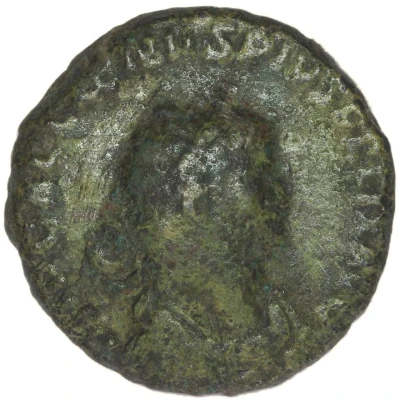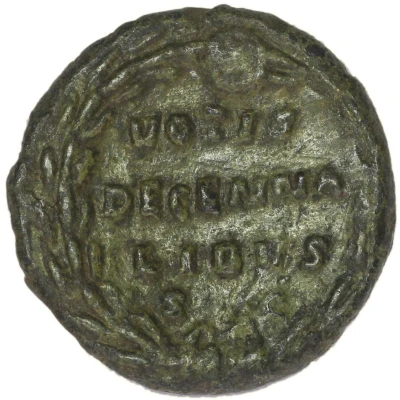


© Trustees of the British Museum
Dupondius - Gallienus VOTIS DECENNALIBVS S C
| Bronze | 7.9 g | - |
| Issuer | Rome › Roman Empire (27 BC - 395 AD) |
|---|---|
| Emperor | Gallienus (Publius Licinius Egnatius Gallienus) (253-268) |
| Type | Standard circulation coin |
| Years | 260-268 |
| Value | Dupondius (1⁄16) |
| Currency | Antoninianus, Reform of Caracalla (AD 215 – 301) |
| Composition | Bronze |
| Weight | 7.9 g |
| Shape | Round (irregular) |
| Technique | Hammered |
| Demonetized | Yes |
| Updated | 2024-10-05 |
| Numista | N#289034 |
|---|---|
| Rarity index | 100% |
Reverse
Legend inscribed within laurel-wreath.
Script: Latin
Lettering: VOTIS DECENNALIBVS S C
Translation:
Votis Decennalibus. Senatus Consultum.
Vows (prayers) for ten years of rule. Decree of the senate.
Comment
Example of this type:Trustees of the British Museum
Source:
Online Coins of the Roman Empire (OCRE)
Interesting fact
The Dupondius coin was issued during the reign of Gallienus, who was a Roman emperor from 260 to 268 AD. During his reign, the Roman Empire was facing numerous challenges, including invasions by barbarian tribes and internal conflicts. Despite these challenges, Gallienus was able to maintain the empire's stability and issue coins like the Dupondius, which were used for everyday transactions. The coin's design features the emperor's image on one side and the Roman goddess Victory on the other, symbolizing the empire's military victories and power. The inscription "VOTIS DECENNALIBVS S C" means "For the ten-year anniversary of the reign" in Latin, indicating that the coin was issued to commemorate a decade of Gallienus' rule. Overall, the Dupondius coin is a fascinating piece of history that provides insight into the Roman Empire's economy, politics, and culture during a time of significant turmoil.